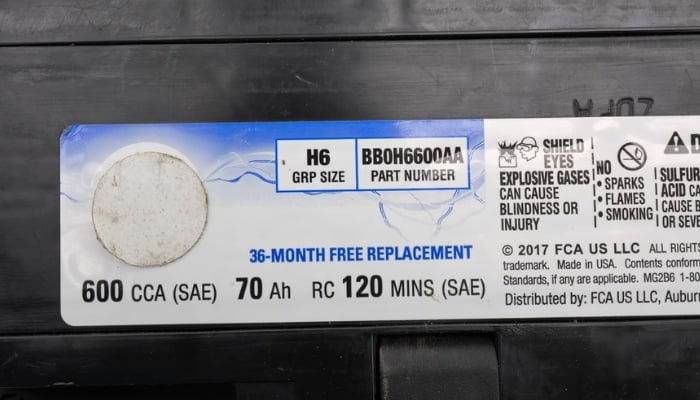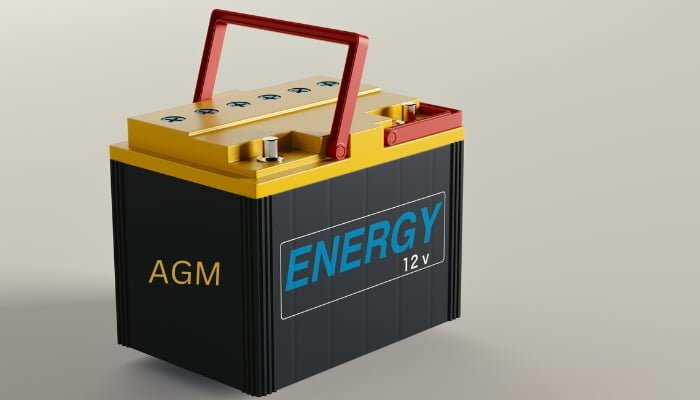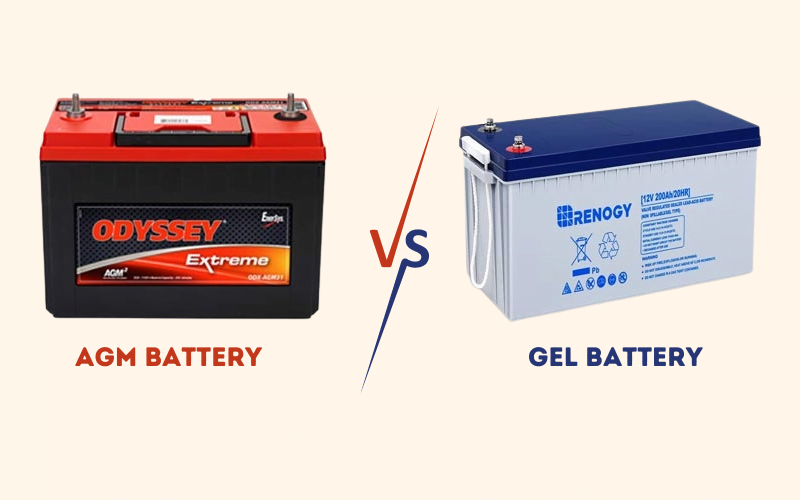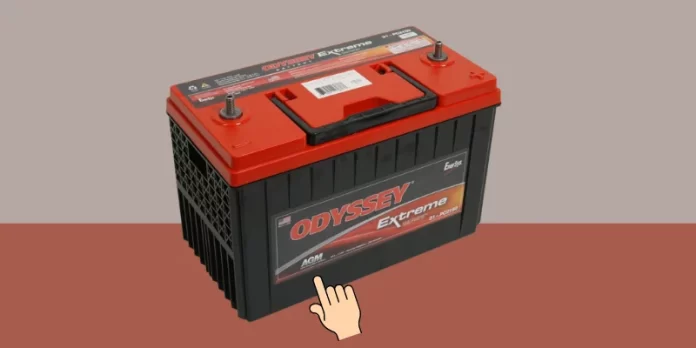Last updated on January 24th, 2024
A lot of vehicle users do not know how to choose the right battery type for their vehicles because a vehicle’s battery is not something we change very often.
Vehicle batteries come in various types, and unless you know distinctive things about them, you might go wrong choosing one for yourself.
Car batteries can be grouped into two categories:
- wet cell batteries and
- dry cell batteries.
AGM is a dry cell battery; it stands for Absorbed Glass Mat Battery.
An AGM does not contain any liquid acid, so there cannot be acid spilling out.
The different battery types are handled differently, and for safer operation, there is a need to find out what type of battery you have in your vehicle.
So, how do you ascertain if the currently installed battery in your vehicle is AGM? Read on to find out how.
How to Identify AGM Batteries
When the need arises to either replace or repair your vehicle’s battery, you should put your safety first and be sure that you know the handling methods.
Putting safety first means verifying and ascertaining the battery type so you can handle it appropriately.
To verify that a vehicle’s battery is AGM, check out the methods highlighted below.


Method 1: Check the Battery label for the Manufacturer’s information
Manufacturers usually provide some information about the batteries they make using the manufacturer’s label.
If the battery is a new or neatly used one, figuring out where the label is on it would not be a hard thing to do.
In the case of AGM batteries, you will easily find “AGM” written on the manufacturer’s label.
If you couldn’t find the “AGM” inscription anywhere on the label, you should check for the battery’s model number then.
With the model number, you will be able to search for the battery’s information online, or better yet, you could contact the manufacturer to get the information from them.
Method 2: Look at the Battery’s top for its physical model characteristics
Each battery model is characterized and easily differentiated by its design and construction. You will agree that the AGM battery style will look different from another battery model.
This method of finding out the battery type should be used when the battery label is not in good condition, and it is not in any way helping to solve the puzzle.
AGM batteries come in non-removable flat tops with only the positive and negative terminals sticking out.
A non-removable battery top will most likely tell you that the battery is a wet cell type; they are usually well sealed. The liquid-acid batteries usually come with a removable top.
This tip can come in handy when you need to differentiate between wet-cell and dry-cell batteries.
Method 3: Shake the Battery
AGM batteries, being dry cell batteries, have acid trapped between the mesh as absorbed by the fiberglass mats and should not give a wiggling sound upon shaking.
Wet cell batteries are lead-acid batteries; the presence of liquid acid in them makes them give a wiggling sound from an extra movement when they are shaken.
It is necessary to put safety first; the battery should be unplugged and taken out of the vehicle before you shake.


How Do AGM Batteries Work?
Hydrogen and Oxygen are generated during the charging of an AGM battery. After the generation of the gases, they react with a little catalyst present to form H2O.
There is nearly zero water loss and loss of heat generated during the results recombining.
The internal battery resistance of an AGM battery is low; hence, it generates less heat and offers a high current demand.
Also, the battery is fast-charged but has the added advantage of a low discharge rate, which allows for long-term durability and reliability.
The charging techniques and voltage charge rate used in the charging of AGM batteries are similar to the ones used in conventional batteries.
What are the Pros and Cons of AGM Batteries?
The pros of AGM batteries are far greater than the cons; check them out in the table below:
Pros of AGM Batteries
- Low internal battery resistance
- Fast Charging
- Low discharge rate
- Operates under cold temperatures
- Standard charging techniques
- Can be used as a jump start
- It is compatible with a lot of cars
- Spillage proof
Cons of AGM Batteries
- It is more expensive than the lead-acid battery type
- Overcharging could ruin the battery’s life


Are AGM and Gel Batteries the Same?
The straightforward answer to the question is “NO”. Most of the time, because of their similarities, AGM and Gel Battery are considered to be the same.
They are similar in that they both are spill-proof, they are deep-cycle batteries, and their mountings are flexible (can be mounted anywhere).
So what differentiates them?
A major difference is in the charge rate of the batteries. AGM batteries can handle higher charge and discharge rates than gel batteries.
AGM batteries are less expensive than Gel batteries. Gel batteries are delicate, and one charge mistake will completely ruin the battery and cause premature failure.
Gel cell batteries use silica (sand) to turn the acid inside the battery into a thick liquid, while AGM is an absorbed glass mat battery.
AGM offers more flexibility and higher performance. AGM is an example of a sealed battery, while a gel battery is one type of flooded battery.
Do AGM Batteries need Maintenance?
AGM batteries have a long battery life. They are usually designed to last more than 7 years when they are well maintained.
Its maintenance is less tasking but requires basic maintenance understanding.
So yes, AGM batteries need maintenance. This brings us to the next question: What do we do to keep an AGM battery in good condition?
Store your AGM battery properly
If you are not going to use your AGM battery for a long period of time, keep it in a well-ventilated, dry, and cool space.
Prevent Sulphation
Sulfation happens when the sulfuric acid found in the lead-acid batteries reacts with either of the battery plates to form lead sulfate.
Keeping the battery in a discharged state is usually the cause of sulfation, and when it happens, the battery’s ability to hold a charge is reduced.
To prevent sulfation, your AGM battery should be well charged at the time of storage, and there should be a constant recharge if you are planning to keep it stored for a long time.
If sulfation has already happened, a desulfurization charge should help reverse the situation.
Do Not Overcharge
Your AGM battery life can be shortened if you engage in overcharging.
The effective way to charge an AGM battery is to use the correct amp-hour (Ah) rating voltage as written in the manufacturer’s instructions to charge it.
Use only the Manufacturer’s recommended Charger
A manufacturer’s charger meets the AGM battery specification and so will not leave you with any undercharging or overcharging situation.
Final Words
At this point in this article, we believe that you would have known the different acid battery types and be able to figure them out when the need arises.
Identifying an AGM battery is quite simple, but deciding to get confirmation from a mechanic or the manufacturer won’t be the wrong thing to do.
If you are considering replacing your liquid acid battery, get an AGM battery.
It is a better replacement because of its ease of use and ease of maintenance. It is much safer, as you don’t have to worry about spillage, and it is less expensive too.
Do let us know in the comment section if this article helped you in any way.
Related Post:



